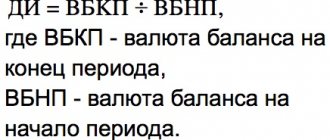MOSCOW, September 23. /TASS/. The State Duma adopted in the third and final reading new excise tax rates on excisable goods indexed for 2021-2023. The norms were formalized as government amendments to the second reading of the bill introducing a reverse excise tax on ethane and liquefied petroleum gases. The document, in particular, provides for an increase in the excise tax on tobacco and tobacco products by 20% in 2021 and indexation of rates of excisable goods in 2023 relative to 2022 to the level of projected inflation (4%).
Content
- Excise tax on alcohol: the essence of the concept and why it is needed
- What is subject to excise tax
- Who pays excise taxes
- How is it different from VAT?
- Types of excise tax rates
- Excise tax rates on alcohol
- Level of increase in alcohol prices
- Calculation and payment of excise taxes
- Timing and procedure
- Goods exempt from excise duty
- The situation with other excisable products
- Labeling of alcoholic beverages
- Consequences of non-payment
- Conclusion
Importance of license
Permission to produce or sell alcohol plays an important role. After all, only having it (necessarily up-to-date) can you get an excise stamp. For this purpose, there are trusted bodies, which include the customs service.
But why do you need so much trouble? — The federal excise stamp on alcohol plays a big role in protecting consumers. After all, thanks to it you can find out everything about the product, including the name of the product itself, where and by whom it was produced. There are indicators of volume, quantity of alcohol, and evidence of its quality. Another plus is a significant replenishment of the budget.
Excise tax on alcohol: the essence of the concept and why it is needed
Excise tax is a duty established by the state for producers of alcoholic beverages, tobacco products and a number of other goods. But today we will dwell in more detail only on the tax for alcohol producers. This tax is called internal, operating within the borders of the state.
In addition, excise taxes in Russia are included in the price of goods, which means that the consumer pays for them. If excisable products are sold at retail, the amount of excise tax is not allocated.
So why are excise taxes needed? The answer is simple: so that the state receives profit from the manufacture of products that are popular among the population. And also, according to experts, increasing excise taxes is an effective measure in the fight against excessive alcohol consumption.
Negative sides:
- Increase in volumes of illegally imported alcohol;
- The risk of increasing sales of obviously low-quality alcoholic beverages.
Calculation of excise tax by the manufacturer
When selling denatured alcohol, the manufacturer must charge excise tax on the day the goods are shipped to the buyer. This follows from the provisions of subparagraph 1 of paragraph 1 of Article 182, paragraph 2 of Article 195 of the Tax Code of the Russian Federation. The manufacturer charges tax regardless of the presence (absence) of a certificate of registration of an organization carrying out transactions with denatured ethyl alcohol. This follows from the provisions of Article 182 of the Tax Code of the Russian Federation.
Calculate the amount of excise tax to be charged using the formula:
| Excise tax amount | = | Volume of denatured ethyl alcohol sold (in liters) | × | Excise tax rate per 1 liter |
The procedure for reflecting the accrued amount of excise duty in accounting depends on:
- on the type of product that will be produced by the buyer from sold denatured alcohol (alcohol-containing or non-alcohol-containing);
- from the seller having a certificate for the production of denatured ethyl alcohol.
How is it different from VAT?
VAT, like excise tax, is an indirect tax. But there are fundamental differences between them, which we will discuss in more detail.
- VAT is charged on a much larger volume of goods. It also applies to services provided by the payer. In turn, excise taxes are established only on goods;
- The next difference is that excise tax is a real burden on the entrepreneur, and when paying VAT, if you use deductions wisely, the burden can be significantly reduced;
- It is not always possible to compensate for the excise tax rate using a deduction;
- Excise taxes, unlike VAT, have a serious impact on the profitability of the company.
Excise taxes in Russia began to operate in 1991. The main elements from which the excise tax is formed are the base, object and tax rate.
Pros or cons of innovations
It would seem that innovations will only worsen the situation, as they add new worries. But no. Quite the contrary. This did not affect the price of the product at all. And budget replenishment has increased significantly. Many manufacturers and entrepreneurs are leaving the shadow business. Thus, over the previous six months, the production of alcoholic beverages increased by 30 percent. And the replenishment of the country’s treasury amounted to more than one hundred billion rubles, which is 17 percent more than last year. It turns out that changes have a positive effect already at the first stage. There is every reason to believe that this is just the beginning, because all retail products have not yet been entered into the system.
How does it all work? — The supplier enters data about its offer into the state information system. In turn, the recipient of the goods, upon receipt, checks them with invoices, both paper and electronic. Enters all data into the same system, where all received information is checked and combined with existing information. If the information matches, permission is given to send it to the distributors. If any discrepancies are found, the fact of delivery cannot be confirmed. In this case, a “Certificate of Discrepancy” is drawn up, which is also recorded.
Types of excise tax rates
- Specific;
- Combined;
- Ad valorem.
Specific
Presented in a fixed amount for 1 unit of goods. Most often used.
Ad valorem
It is uniform for the entire country and is set as a percentage of excisable goods. Its weakness is that each time you need to calculate the customs value of the product.
Combined
Combines specific and ad valorem rates.
Production of non-alcohol-containing products
There is no need to charge excise tax when transferring denatured alcohol as a raw material for the production of non-alcohol-containing products within the organization (subclause 8, clause 1, article 182 of the Tax Code of the Russian Federation). But only if there is a certificate of registration of the organization performing operations with denatured ethyl alcohol.
In accounting, reflect the purchase of denatured alcohol as a raw material for the production of non-alcohol-containing products on account 10-1 “Raw materials and materials” at the actual cost:
Debit 10-1 Credit 60 (76)
– denatured ethyl alcohol received from the supplier was capitalized.
The acquisition of ownership of raw materials can be confirmed by a sales contract, invoice or other documents in which the organization will be indicated as the buyer of this product.
The excise tax must be calculated on the date of receipt (posting) of the denatured alcohol (Clause 5, Article 195 of the Tax Code of the Russian Federation).
Calculate the amount of accrued excise tax using the formula:
| Excise tax amount | = | Volume of denatured ethyl alcohol produced (in liters) | × | Current excise tax rate for 1 liter of denatured ethyl alcohol |
In accounting, reflect the amount of accrued excise tax on the purchased denatured alcohol by posting:
Debit 19 sub-account “Excise taxes” Credit 68 sub-account “Calculations for excise taxes”
– excise tax is charged upon receipt of denatured ethyl alcohol.
When writing off purchased denatured alcohol as a raw material for the production of non-alcohol-containing products, do not include the amount of accrued excise tax in the cost of the raw materials used (subclause 1, clause 4, article 199 of the Tax Code of the Russian Federation).
Accept the specified amount of excise tax for deduction (subject to the presentation of documents confirming the fact that the organization transferred denatured alcohol into production) (clause 11 of Article 200 of the Tax Code of the Russian Federation).
In accounting, reflect the acceptance of excise tax for deduction by posting:
Debit 68 sub-account “Calculations for excise taxes” Credit 19 sub-account “Excise taxes”
– excise tax accrued upon receipt of denatured ethyl alcohol is accepted for deduction.
For more information on applying a tax deduction when purchasing denatured ethyl alcohol, see When and how excise tax can be deducted.
An example of excise tax calculation for the production of denatured ethyl alcohol for the production of non-alcohol-containing products
The Alpha organization, which has a certificate for the production of denatured ethyl alcohol, sold 1000 liters of denatured alcohol to Omega LLC in July. The contractual cost of goods sold is 236,000 rubles. (including VAT – 36,000 rubles). The actual cost of goods sold is 130,000 rubles.
Omega has a certificate for the production of non-alcohol-containing products. In August, the buyer used 700 liters of denatured alcohol to produce medical plaster bandages, and in September – 300 liters. Omega handed over the register of invoices with a tax authority mark for this transaction to the seller in August. Documents confirming the release of denatured alcohol into production were transferred to the seller in the month the raw materials were written off.
The excise tax rate per 1 liter of denatured alcohol is 102 rubles.
Omega's accountant made the following entries in the accounting records.
In July:
Debit 10 subaccount “Raw materials and materials” Credit 60 – 200,000 rub. (RUB 236,000 – RUB 36,000) – denatured alcohol was received from the supplier for the production of non-alcohol-containing products;
Debit 19 subaccount “Calculations for VAT” Credit 60 – 36,000 rub. – the amount of input VAT is reflected;
Debit 19 sub-account “Excise taxes” Credit 68 sub-account “Calculations for excise taxes” – 102,000 rubles. (1000 l × 102 rubles) – excise tax is charged on the purchase of denatured alcohol for the production of non-alcohol-containing products;
Debit 68 subaccount “Calculations for VAT” Credit 19 subaccount “Calculations for VAT” – 36,000 rubles. – the amount of input VAT is accepted for deduction;
Debit 60 Credit 51 – 236,000 rub. (RUB 200,000 + RUB 36,000) – paid to the supplier for denatured alcohol.
In August:
Debit 44 Credit 10 subaccount “Raw materials and materials” – 140,000 rubles. (200,000 rubles: 1000 l × 700 l) – 700 liters of denatured alcohol were written off for the production of medical plaster bandages;
Debit 68 sub-account “Calculations for excise taxes” Credit 19 sub-account “Excise taxes” - 71,400 rubles. (700 l × 102 rubles) – excise tax related to denatured alcohol released into production has been accepted for deduction.
In September:
Debit 44 Credit 10 subaccount “Raw materials and materials” – 60,000 rubles. (RUB 200,000: 1000 l × 300 l) – 300 liters of denatured alcohol were written off for the production of medical plaster bandages;
Debit 68 sub-account “Calculations for excise taxes” Credit 19 sub-account “Excise taxes” - 30,600 rubles. (300 l × 102 rubles) – excise tax related to denatured alcohol released into production is accepted for deduction.
Excise tax rates on alcohol
Next, we will consider the amount of excise taxes on alcoholic products, presenting the information in table form. And then we’ll do a little comparative analysis.
Excise taxes on alcohol in 2021:
| Product type | Tax rate 2021 | Tax rate 2021 | Tax rate 2021 (from 01.01.) |
| Ethyl. alcohol, which is sold by companies involved in the production of cosmetics. or perfume. products | 1 liter / 0 rub. | 1 liter / 0 rub. | 1 liter / 0 rub. |
| Ethyl. alcohol sold by companies that do not pay advance excise taxes | 1 liter – 107 rub. | 1 liter – 107 rub. | 1 liter – 107 rub. |
| Alcohol containing more than 9% alcohol (excluding beer and sparkling wine) | 1 liter – 523 rub. | 1 liter – 523 rub. | 1 liter – 523 rub. |
| Alcohol containing less than 9% alcohol (excluding beer and sparkling wine) | 1 liter – 418 rub. | 1 liter – 418 rub. | 1 liter – 418 rub. |
| Wine, excluding sparkling wine | 1 liter – 5 rub. | 1 liter – 5 rub. | 1 liter – 5 rub. |
| Sparkling wine | 1 liter – 36 rub. | 1 liter – 36 rub. | 1 liter – 27 rub. |
| Beer with up to 0.5% alcohol | 1 liter – 0 rub. | 1 liter – 0 rub. | 1 liter – 0 rub. |
| Beer containing from 0.5% to 8.6% alcohol | 1 liter – 21 rub. | 1 liter – 21 rub. | 1 liter – 21 rub. |
| Beer with more than 8.6% | 1 liter – 39 rub. | 1 liter – 39 rub. | 1 liter – 39 rub. |
The excise tax on alcohol brings the highest income to the state when compared with other taxes. And tax rates on vodka are much higher than on other alcohol. This is an argument in favor of reducing the production of such a drink.
Ethyl alcohol is the main source of profit from the use of excise duties. The excise duty on alcohol brings the highest income to the state when compared with other taxes. And tax rates on vodka are much higher than on other alcohol. This is an argument in favor of reducing the production of such a drink.
Comparing rates over several years, we see that in 2021 they remained almost at the 2021 level.
Let’s see below how this affected alcohol prices in various retail chains.
Presentation of excise tax to the buyer
If the manufacturer does not have a certificate for the production of denatured ethyl alcohol (or if the denatured alcohol is used by the buyer for the production of alcohol-containing products), present the amount of accrued excise tax to the buyer and highlight it as a separate line in invoices and in all settlement and primary documents. This must be done regardless of whether the buyer has a certificate for the production of alcohol-containing products or not. This procedure follows from the provisions of paragraph 12 of Article 200, paragraphs 1 and 2 of Article 198 of the Tax Code of the Russian Federation.
In accounting, reflect the accrued excise tax in correspondence with the account in which the amounts of proceeds from the sale of denatured alcohol are recorded:
Debit 90-4 (91-2) Credit 68 subaccount “Calculations for excise taxes”
– excise tax is charged on the sale of denatured ethyl alcohol.
Transfer the amount of excise tax presented for payment to the buyer to the budget. An organization that has a certificate of registration of a person carrying out transactions with denatured ethyl alcohol pays excise tax before the 25th day of the third month following the expired tax period (Clause 3.1 of Article 204 of the Tax Code of the Russian Federation). If the taxpayer does not have the specified certificate, transfer the tax to the budget before the 25th day of the month following the reporting month (clause 3 of Article 204 of the Tax Code of the Russian Federation).
An example of excise tax on the sale of denatured ethyl alcohol for the production of alcohol-containing products
The Alpha organization has a certificate for the production of denatured ethyl alcohol. In July, Alpha sold 1,000 liters of denatured alcohol to a cosmetics production plant. The contract price of sold alcohol is 236,000 rubles. (including VAT - 36,000 rubles, excise tax - 102,000 rubles), actual cost - 80,000 rubles.
The buyer has a certificate for the production of alcohol-containing products. In August, the buyer used 700 liters of denatured alcohol to produce the alcohol-containing tincture “Cucumber” in metal aerosol packaging, and the remaining 300 liters in September.
The excise tax rate per 1 liter of denatured alcohol is 102 rubles.
Alpha's accountant made the following entries in the accounts.
In July:
Debit 62 Credit 90-1 – 236,000 rubles. – revenue from the sale of denatured alcohol is reflected;
Debit 90-3 Credit 62 – 36,000 rub. – VAT is charged on sales proceeds;
Debit 90-4 subaccount “Excise taxes” Credit 68 subaccount “Calculations for excise duties” - 102,000 rubles. (1000 l × 102 rubles) – excise tax is charged on the sale of denatured alcohol purchased for the production of alcohol-containing products;
Debit 90-2 Credit 43 – 80,000 rub. – the actual cost of goods sold is written off.
Apply the same procedure for recording and paying excise tax if the buyer of denatured ethyl alcohol does not have a certificate for the production of non-alcohol-containing products.
Level of increase in alcohol prices
Excise taxes on alcohol are planned to increase only in 2021. on the:
- Products containing ethyl alcohol over 9% up to 544 rubles, the excise tax is now 523 rubles.
- Products containing ethyl alcohol less than 9% up to 435 rubles, against 418 rubles, the current rate for 2021.
- Wine – the excise tax rate will be 19 rubles. per liter, now it is 18 rubles.
- Ethyl alcohol sold by companies that do not pay advance excise tax payments up to 111 rubles. per liter Now the excise tax rate is 107 rubles. per liter
Calculation of excise duty by the buyer
When purchasing denatured ethyl alcohol, an organization charges excise tax if two conditions are simultaneously met:
- the organization has a certificate for the production of non-alcohol-containing products;
- the received goods belong to the organization by right of ownership.
An organization can obtain a certificate of registration of an organization carrying out transactions with denatured ethyl alcohol voluntarily upon fulfilling the conditions provided for in paragraph 4 of Article 179.2 of the Tax Code of the Russian Federation, and in accordance with the Administrative Regulations approved by Order of the Federal Tax Service of Russia dated August 25, 2014 No. MMV-7 -15/424.
If an organization uses customer-supplied raw materials for the production of non-alcohol-containing products, do not charge excise tax on the receipt of denatured ethyl alcohol. This is explained by the fact that under an agreement on the processing of raw materials on a toll basis, the ownership of denatured alcohol does not pass to the contractor. Consequently, the processor is not subject to excise tax.
This follows from the provisions of subparagraph 20 of paragraph 1 of Article 182 of the Tax Code of the Russian Federation.
Calculation and payment of excise taxes
In this part of our conversation, we will give an example of how excise tax is calculated, for example, at a fixed rate.
For this, the following calculation formula is used:
A = Nb * Tc, where A is the accrued amount of excise duty, Nb is the tax base (the number of goods sold), Tc is the fixed rate.
So, Company S. produced and sold 700 liters of beer, which is strong. This means that she will have to pay: 700 * 21 = 14,700 rubles.
The combined rate is calculated using the following formula:
A = Nb * Tc + O + Ac /100%, where A is the amount of excise duty, Nb is the tax base, Tc is a fixed rate, O is the amount that will be received upon the sale of Nb, Ac is the percentage rate.
Tax deduction
If the seller has a certificate for the production of denatured ethyl alcohol, and the buyer purchases goods for the production of non-alcohol-containing products and has the corresponding certificate, the amount of accrued excise tax can be deducted (clause 12 of Article 200 of the Tax Code of the Russian Federation). In this case, the amount of excise tax is not presented to the buyer and is not highlighted in invoices, settlement and primary documents. These documents are inscribed (stamped) “without excise tax.” This procedure is provided for in paragraphs 1, 2 and 9 of Article 198 of the Tax Code of the Russian Federation.
In accounting, reflect the excise tax on account 19 “Value added tax” subaccount “Excise taxes”:
Debit 19 sub-account “Excise taxes” Credit 68 sub-account “Calculations for excise taxes”
– excise tax is charged on the sale of denatured ethyl alcohol.
If the seller accepts the entire amount of accrued excise tax for deduction in the same month in which the sale occurred, then the amount of tax payable on this transaction will be zero. But if the right to apply a tax deduction occurs in subsequent tax periods, then the amount of excise tax will have to be transferred to the budget. This will need to be done no later than the 25th day of the third month following the month of implementation (clause 3.1 of Article 204 of the Tax Code of the Russian Federation). The excise tax can be deducted in the period when all the conditions specified in paragraph 12 of Article 201 of the Tax Code of the Russian Federation are met.
An example of excise tax on the sale of denatured ethyl alcohol for the production of non-alcohol-containing products
The Alpha organization has a certificate for the production of denatured ethyl alcohol. In July, Alpha sold 1,000 liters of denatured alcohol to Omega LLC. The buyer has a certificate for the production of non-alcohol-containing products. Omega used the resulting alcohol to produce medical plaster bandages. In August, 700 liters of denatured alcohol were used, in September – 300 liters.
The contractual cost of goods sold is 236,000 rubles. (including VAT - 36,000 rubles), actual cost - 130,000 rubles. Omega transferred the register of invoices to Alpha in July. Documents confirming the release of denatured alcohol into production were transferred to the seller in the month the raw materials were written off.
The excise tax rate per 1 liter of denatured alcohol is 102 rubles.
Alpha's accountant made the following entries in the accounts.
In July:
Debit 62 Credit 90-1 – 236,000 rubles. – revenue from the sale of denatured alcohol is reflected;
Debit 90-3 Credit 68 subaccount “Calculations for VAT” – 36,000 rubles. – VAT is charged on sales proceeds;
Debit 19 sub-account “Excise taxes” Credit 68 sub-account “Calculations for excise taxes” – 102,000 rubles. (1000 l × 102 rub./l) – excise tax is charged on the sale of denatured alcohol purchased for the production of non-alcohol-containing products;
Debit 90-2 Credit 43 – 130,000 rub. – the actual cost of goods sold is written off.
In August:
Debit 68 sub-account “Calculations for excise taxes” Credit 19 sub-account “Excise taxes” - 71,400 rubles. (700 l × 102 rub./l) – the excise tax accrued on the sale of denatured alcohol used for the production of non-alcohol-containing products in August was accepted for deduction.
In September:
Debit 68 sub-account “Calculations for excise taxes” Credit 19 sub-account “Excise taxes” - 30,600 rubles. (300 l × 102 rubles) – the excise tax accrued on the sale of denatured alcohol used for the production of non-alcohol-containing products in September was accepted for deduction.
Liability and fines
Illegal actions with excisable alcohol products face administrative and criminal liability. The penalties depend on who committed the crime and its severity. If an individual sells alcohol illegally, he will be fined 30-50 thousand rubles and the goods will be confiscated. Similar actions by an entrepreneur or peasant farm are fined 100-200 thousand with confiscation.
The lack of a seller's license for alcoholic beverages is punishable by an administrative fine. For officials, a fine of 500 thousand-1 million rubles and confiscation of goods. For violation of licensing requirements, a legal entity will pay 100-150 thousand rubles.
In Russia it is prohibited to sell alcohol after the established time. Different regions impose different time restrictions. During the holidays, a complete ban on the purchase of alcohol has been introduced. Regions complete the list of holidays, but all-Russian days are as follows:
- September 1.
- Last bell and graduation day.
- June 1st.
- 27th of June.
Failure to comply with the ban is punishable by an administrative fine. For organizations up to 40 thousand rubles, for officials up to 4 thousand and for citizens up to 2 thousand rubles.
Criminal liability arises for the sale of alcohol by an individual to a minor citizen. 2 preventive measures: a fine of 50-80 thousand and involvement in paid labor for 12 months. A person faces the same punishment for repeated illegal sale of alcohol.
If an organized group sold alcohol for an amount exceeding 1 million rubles, they face:
- imprisonment up to 5 years;
- attraction to work for up to 5 years;
- fine 3-4 million rubles.
A company that illegally produced and sold alcohol for more than 100 thousand rubles, but not more than 1 million, is fined 2-3 million rubles. Instead of a fine, forced labor or imprisonment for 3 years is imposed.
Become an author
Become an expert
Clause 10, Article 193 of the Tax Code of the Russian Federation
For the purposes of this chapter, the date of sale of refined petroleum products that are not excisable goods is defined as the day of shipment (transfer) of the relevant goods, including to the structural unit of the organization carrying out their retail sale.
In the case of production of products of processing of petroleum raw materials on the basis of an agreement on the provision of services to the taxpayer for the processing of petroleum raw materials, the date of transfer is recognized as the date of signing the acceptance certificate for products of processing of petroleum raw materials that are not excisable goods.
(Clause introduced - Federal Law No. 301-FZ dated August 3, 2018)
←Article 192 of the Tax Code of the Russian Federation, Article 194 of the Tax Code of the Russian Federation→
How to count
It is important to correctly calculate the excise tax before submitting the declaration to the Tax Inspectorate. The taxpayer independently keeps records of products and is obliged to submit reliable calculations, otherwise he risks receiving a fine. Using the formula, we will figure out how to calculate the excise tax on alcohol.
Excise tax on alcohol = Number of products in liters for 1 month * Tax rate
If a manufacturing plant produces 1 or 5 types of alcoholic beverages, it takes each one into account separately. The final calculation will be submitted, but with the content of all categories of drinks with alcohol. When producing 240 liters of vodka and 380 liters of fruit wine in one reporting month of 2021, the manufacturer will pay:
240 * 523 + 380 * 18 = 132,360 rubles
In 2021, with a change in the rate for ethyl alcohol, the same plant with the same production results will pay:
240 * 544 + 380 * 19 = 137,780 rubles
The cost of excise taxes on alcohol due to the rate increase will be 5,420 rubles. For large corporations, such tax increases will not cause difficulties. Timely optimization will help continue business development. Globally, increasing the alcohol tax serves a good purpose - protecting the health of citizens. Alcohol increases in price and hits consumers' pockets.








